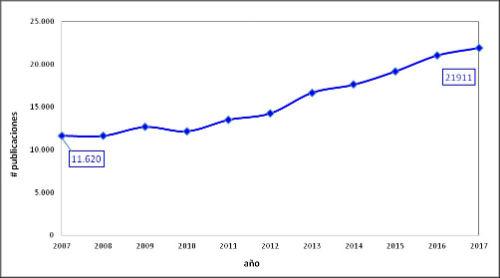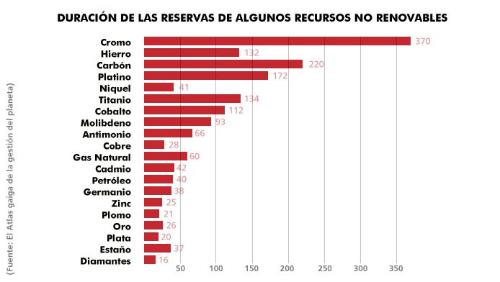 In this first part we will highlight the history of heavy metals and the way in which they have been implemented over time.
In this first part we will highlight the history of heavy metals and the way in which they have been implemented over time.
by: M.Sc. Ph.D. Julián A. Restrepo R.*
Introduction: As a technician and amateur scholar of history, I consider it paradoxical that the so-called "heavy metals" (MPs) still today continue to be a problem of environmental interest, and in particular, to know that there is still no extensive global legislation in this regard, in particular for the paints and coatings sector.
Trying to contextualize the topic of "heavy metals", I have done a small search on the internet for various associated news, both in English (heavy metals) and in Spanish (heavy metals). Thus, using the search criterion "heavy metals news", a total of 426,400 related news are reported (for the year 2016 415,000 related news were found [1]). In particular, it is worth mentioning that news in English is 10 times that of news in Spanish, which could indicate the important advantage that several industrialized countries have on the subject, over Latin America. In any case, it is clear that some countries do care more than others about the impact of MPs.
Delving into the topic of news related to MPs, we must highlight some associated with the presence of lead, mercury and cadmium, mainly: Presence of heavy metals in rivers, lagoons and seas [2], contamination of children with heavy metals in mining areas [3], contaminated fish in coastal populations [4], leachate of heavy metals in mining areas [5], sweets contaminated with heavy metals [6], tuna contaminated with high levels of mercury, found in the Colombian market [7], toys for children contaminated with lead [8], various reports and news denouncing the devastating effects of the use of mercury in illegal gold mining in Colombia [9].
Also, by making a query in Databases of scientific publications for articles published in the last 10 years you can construct Figure 1, below:

Figure 1: Evolution of "heavy metals" publications in the period from 2007 to 2017.
Source: ScienceDirect (http://www.sciencedirect.com/) [10]
Figure 1 shows that in recent years there has been an increase in scientific publications associated with the subject by 89%. That is, this shows that the issue of the problem is still a current environmental issue and of great scientific, environmental and social interest.
Metals and the development of civilization
The earth's crust contains various chemical elements useful for man, including many metals that, since ancient times, have been of great importance for the development and progress of civilizations, to such an extent that it would be very difficult to imagine our current society without an extensive use of utensils and tools made with metals. Thus, of the chemical elements we know today, despite the widespread use of plastics and other materials, approximately 75% are metals [11].
For chemists and environmentalists, it is perhaps relevant and curious that three distant and important historical periods of humanity are identified according to the metals that were predominantly used in them. Indeed, after the Stone Age, the so-called Metal Age period followed, composed of three periods: The Copper Age (4,000-3,000 BC.C.), the Bronze Age (3,000-1,500 BC.C.) and finally the Iron Age (1,500 BC.C.) [12].
The fact that the Copper Age first occurred is due to the fact that copper can be found in many places in a free state (in veins of certain rocks and could be extracted with patience and effort), that is, as a chemical element not combined, while practically no bronze or free iron is found but combined with other elements. Even some historians estimate that, in fact, about 10,000 years ago, in some regions of Asia copper was already used, which was used to build farming instruments, weapons and ornamental objects that, due to the high cost of metal, were kept in hidden places [11].
It is also known that more than 5,000 years ago, our ancestors had already begun to use gold and silver. This was precisely because these metals, like copper, were in a free state and could be extracted with some ease.
On the other hand, due to its extensive use, we must indicate that the known reserves of various metals have been depleted (non-renewable resources), such as copper, tin, cadmium, silver, lead and zinc [11] (see Figure 2). In fact, some claim that during the twenty-first century we will deplete the most important mineral reserves on the planet unless the recycling of metals and other strategic minerals is rigorously promoted and the Earth's mineral capital is better managed [13].

Figure 2: Duration in years of current reserves of some non-renewable resources, including various metals [14].
Of civilizations, artists and "heavy metals"
Continuous exposure in ancient times to lead, mercury, cadmium and other MPs, represents one of the first environmental risks described in the history of mankind [1] [10]: Hippocrates (370 BC.C.) described lead poisoning clinically and in detail and called it "Saturnine colic" [15]. In 200 B.C., lead exposure was linked to different conditions: mental and physical disorders, discomfort, paleness, severe abdominal pain, constipation, colic, vomiting, paralysis and even death. In ancient times, the lead was called saturn, in honor of the Greek god Saturn, who was represented as insane and aggressive, and in whose honor the Saturnal festivals were celebrated, where, by the way, a lot of wine was consumed [16].
Some historians indicate that lead intake may have been one of the reasons for the decline of ancient Greece and the fall of the Roman Empire, there are even indications that emperors Julius Caesar and Octavian may have presented lead poisoning, since at the time it was common to boil the juice of grapes in lead pots, storing beverages in lead-coated containers, using lead tableware, using lead pipes for the transport of drinking water: Gilfillan in 1965 [17] proposed the theory that Saturnism was the cause of the decrease in the birth rate and the low rate of child survival among the wealthy class of Rome, it even caused a learning disability and a higher proportion of dementia (such as that of the emperors Caligula, Nero or Commodus) [16].
Similarly, exposure to lead and mercury is spoken of in Egyptian culture (in the time of the pharaohs), and in the cultures of Crete and Sumer. During the Middle Ages the use of lead decreased and at the end of the fifteenth century its use by goldsmiths and painters increased, being they, along with the miners, the most affected by this metal. Studies conducted on the Greenland ice sheet suggest that there was a lot of environmental lead pollution during the Roman Empire and the Renaissance [1][10].
It has been indicated that in the eighteenth and nineteenth centuries, Saturnism led to a decline of the upper class in England, due to the high consumption of contaminated port wine [18]. On the other hand, Saturnism was more frequent among painters, in fact it was more commonly called "colic of painters", due to the high content of lead present in the pigments they used, and is that until the early twentieth century, practically a good number of the colors used by painters in their works were made with pigments based on lead [19].
The first synthetic inorganic pigment
Examples of these are in the white pigments of Spain or albayalde (lead carbonate). This was the first entirely synthetic inorganic pigment, and its color was highly appreciated among artists. Its whiteness had a warmer hue than other bases; in addition, its consistency was dense and quick drying, which made it ideal for mixing with other colors [20]. Used since the late nineteenth century in oil painting, its toxicity had been proven at least half a century earlier. Its use can be seen in the effects of transparency in the luminous dress of the Countess of Chinchón, portrayed by Goya (1800). It was also frequently used for the preparation of canvases, especially for primer (layer of paint on which color is applied), and until the last third of the last century, because it was cheap and easy to obtain, it was used to paint the walls of houses, with the consequent risk of poisoning for its inhabitants.
Another color in very common use since the Baroque was Naples yellow (lead antimony). Caravaggio's Basket with Fruits (1596), one of the first still lifes of Western painting, is cut out on a yellow background from Naples [19]. For his part, Van Gogh used lead carbonate and especially lead chromate to paint his work "The Yellow House" (1888), and in fact, many of his works, since this yellow caused him a great fascination [21].
Likewise, one cannot fail to mention a compound even more toxic than the previous ones, the lead minium or Saturn red (lead tetroxide) [19]. Until its prohibition, in the late 70s, minio was used as an antioxidant to protect various surfaces exposed to the elements.
Note: In the second part you will find the description of Other pigments with high lead content and a description about the meaning of heavy metals or toxic metals.
References
[1] Restrepo, J.A., "Hanlon's Principle in Formulation, Part I". Inpralatina, Vol. 22, No. 1, Jan/Feb, 2017, pp. 22-25; (b) Restrepo, J.A., "Hanlon Principle in Formulation, Part II". Inpralatina, Vol. 22, No. 2, Mar/Apr, 2017, pp. 22-25
[2] (a) http://www.eluniverso.com/vida/2017/10/08/nota/6420019/presencia-metales-pesados-rios-santo-domingo; (b) http://www.farodevigo.es/portada-pontevedra/2017/10/01/colectivos-ecologistas-alertan-mal-rios/1759476.html; (c) http://www.lagacetasalta.com.ar/nota/91365/actualidad/cuenca-arias-arenales-quien-se-hace-cargo-contaminacion.html; (d) http://www.europapress.es/cantabria/noticia-banderas-negras-ea-mala-gestion-espigones-santander-contaminacion-ria-san-martin-20171011111203.html; (e) http://www.laopiniondemurcia.es/comunidad/2017/10/10/nivel-metales-pesados-mar-menor/866091.html
[3] (a) https://www.el-carabobeno.com/peru-denuncian-contaminacion-ninos-metales-pesados-zonas-mineras/; (b) http://www.laverdad.es/murcia/cartagena/salud-hara-analiticas-20170927013814-ntvo.html
[4] https://www.elespectador.com/noticias/salud/pescado-contaminado-en-la-mesa-de-las-mujeres-mas-pobres-de-cali-articulo-714667
[5] https://www.theguardian.com/australia-news/2017/oct/10/sydney-catchment-water-contamination-deadline-nears-for-mine-owner
[6] (a) http://www.adn40.mx/noticia/mexico/nota/2017-08-12-13-13/dulces-mexicanos-presentan-altas-cantidades-de-plomo/; (b) http://www.google.com.co/url?sa=t&rct=j&q=&esrc=s&source=web&cd=2&ved=0ahUKEwi6_Yf74PzWAhXMLyYKHde2DtsQFgguMAE&url=http%3A%2F%2Fexpresocampeche.com%2Fnotas%2Fnacional%2F2017%2F08%2F13%2Fdetectan-altas-cantidades-plomo-en-dulces-mexicanos%2F&usg=AOvVaw19eEiv2DeDDCf2ej3xyzPf; (c) http://www.huffingtonpost.com.mx/2017/09/05/no-solo-los-dulces-tienen-plomo-estamos-rodeados-de-este-metal-pero-si-hay-solucion_a_23197717/
[7] (a) http://www.elcolombiano.com/colombia/salud/efectos-en-la-salud-de-consumir-atun-contaminado-por-mercurio-AN7168389; (b) http://www.eltiempo.com/vida/salud/atun-de-van-camp-s-con-exceso-de-mercurio-encuentra-invima-123046; (c) http://www.semana.com/nacion/articulo/atun-enlatado-con-alta-contaminacion-de-mercurio-en-colombia/504325
[8] (a) http://expansion.mx/negocios/2009/06/05/mattel-paga-multa-por-juguetes-con-plomo; (b)
[9] (a) http://noticias.caracoltv.com/colombia/el-mercurio-envenena-colombia-efectos-devastadores-de-la-mineria-ilegal; (b) http://www.elcolombiano.com/especiales/mercurio-en-antioquia/el-mercurio-un-monstruo-dormido-en-antioquia-YC721881; (c) http://www.eltiempo.com/multimedia/especiales/mineria-ilegal-en-colombia-comprar-mercurio-en-bogota-es-tan-facil-como-comprar-oro/16460373
[10] ScienceDirect: http://www.sciencedirect.com/science/search, criterion: "heavy metals", 09/09/2017
[11] https://www.ecoportal.net/temas-especiales/contaminacion/metales_pesados_ambiente_y_salud/
[12] http://www.historialuniversal.com/2009/05/edad-metales-cobre-bronce-hierro.html
[13] Valero, A., PhD Thesis, "Exergy evolution of the mineral capital on earth". University of Zaragoza, 2008
[14] a) Lovelock, J., Gaia: A new look at life on Earth. Oxford University Press, 1979; (b) https://www.luisllamas.es/el-agotamiento-de-las-reservas-minerales/
[15] Restrepo, J.A. "Regulación del límite del contenido de plomo para productos en Colombia". STAR presentation (Association of Andean Coating Technicians), within the framework of Latinpin conferences, for the region; Sep, 2017: (a) http://www.latinpin.com/noticias/?se=9; (b) http://starandinapaint.com/wp/wordpress/
[16] http://www.euskonews.com/0614zbk/gaia61404en.html
[17] Environmental Health News. School of Public Health and Community Medicine. University of Washington. Spring-Summer 2001
[18] a) Nriagu, J., The Saturnine Drop Among Roman Aristocrats: Did Lead Poisoning Contribute to the Fall of the Empire? New England Journal of Medicine; March, 1983. pp. 660; b) Graeme, K.A., Pollac, C.V.Jr. Heavy metal toxicity, part II: lead and metal fume ever. J. Emerg. Med., 1998, 16 (2), pp. 171-177
[19] (a) https://letamendi.wordpress.com/2014/02/12/saturnismo-la-enfermedad-de-los-pintores-introduccion/; b) Chic García, G., Considerations around an amphora found in La Punta de la Nao (Cádiz). Tribute to Prof. Dr. Hernández. T.I. Seville. 1982. pp. 51-56
[20] (a) https://lavozdelmuro.net/5-curiosos-y-sorprendentes-casos-de-personas-que-se-envenenaron-a-si-mismas-sin-saberlo/; b) Grout, J., Lead poisoning and Rome. University of Chicago
[21] https://letamendi.wordpress.com/tag/saturnismo/
[22] (a) http://www.revclinesp.es/es/goya-fortuny-van-gogh-portinari/articulo/13084764/; (b) http://www.larazon.es/lifestyle/la-razon-del-verano/deconstruyendo-dietas/que-tuvieron-en-comun-goya-beethoven-y-van-gogh-FE10361510; c) Montes S.J., Goya, Fortuny, Van Gogh, Portinari: lead poisoning in painters across three centuries. Revista Clínica Española, Vol. 206, 1, 2006, pp. 30-32
[23] González L., F.J.; Montejo, A.L., Implication of Saturnism in The Psychopathology of Vincent van Gogh: https://www.researchgate.net/publication/286700293_Implicacion_del_saturnismo_en_la_psicopatologia_de_Vincent_van_Gogh
[24] https://en.wikipedia.org/wiki/Candido_Portinari
[25] http://www.abc.es/cultura/musica/abci-beethoven-genio-murio-comer-pescado-contaminado-danubio-201604170240_noticia.html
[26] (a) Restrepo, J.A., "The Idea of Eternal Return, Part I"; Inpralatina, Vol. 17, No. 3, May/June 2012, pp. 37-38; b) Restrepo, J.A., "The Idea of eternal return, part II"; Inpralatina, Vol. 17, No. 4, Jul/Aug 2012, pp. 24-29
[27] Duffus, J. H., "Heavy metals: a meaningless term? (IUPAC Technical Report)" Pure and Applied Chemistry, 2002, Vol. 74, pp. 793-807
[28] https://es.wikipedia.org/wiki/Metal_pesado
[29] https://www.ecoportal.net/temas-especiales/salud/la_intoxicacion_por_metales_pesados_y_su_eliminacion_a_traves_de_remedios_naturales/
* M.Sc. Ph.D. Julián A. Restrepo R. Advisor and Technical Consultant in Coatings. President STAR (Association of Andean Technicians in Coatings). [email protected] Medellin, Colombia.

























Leave your comment